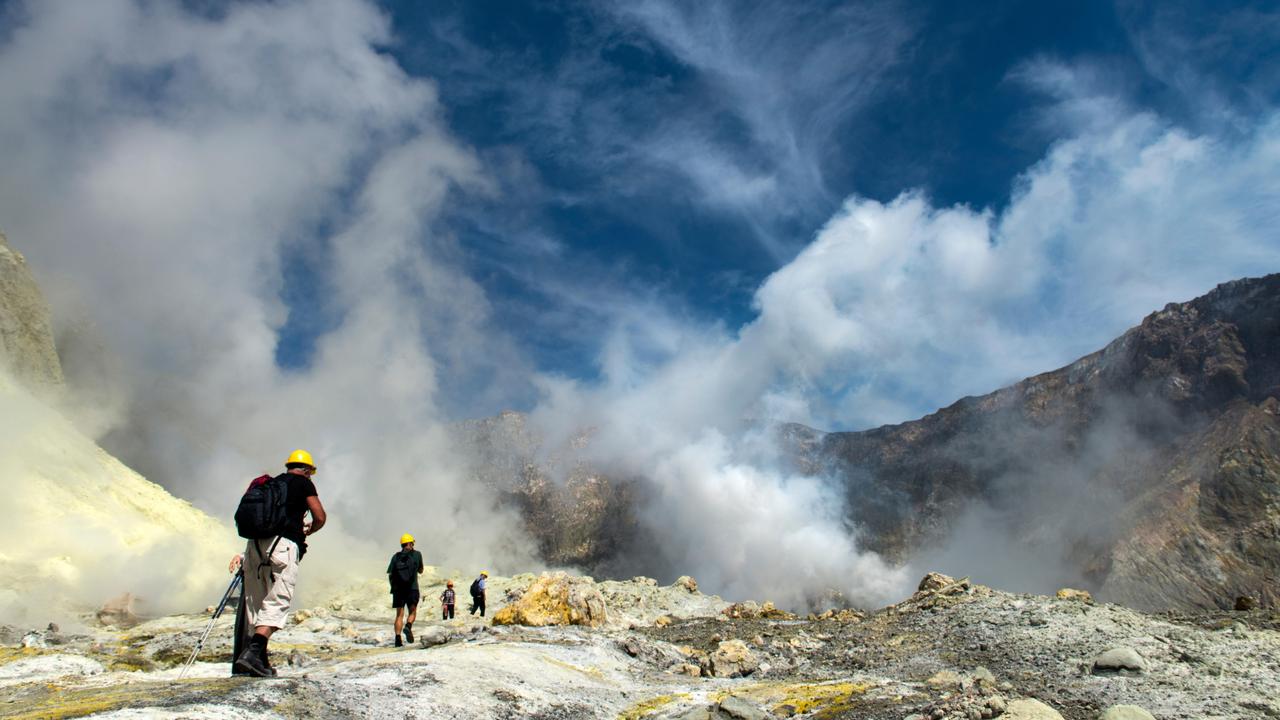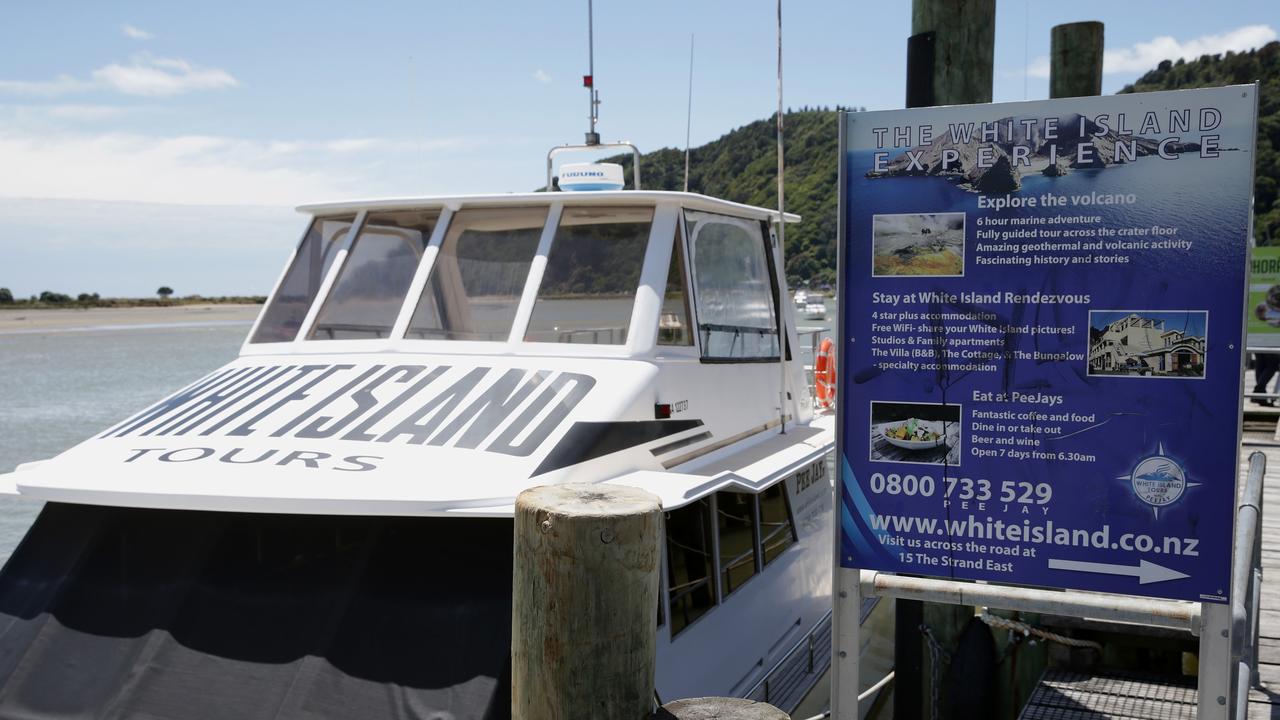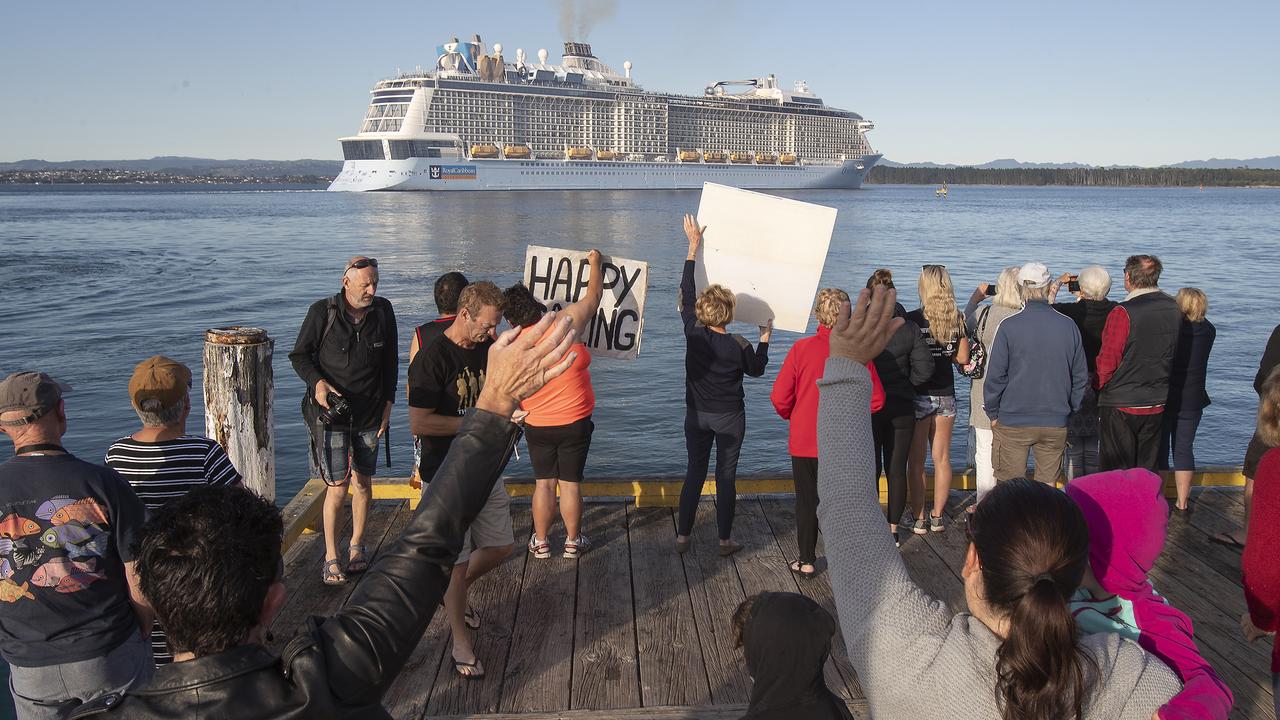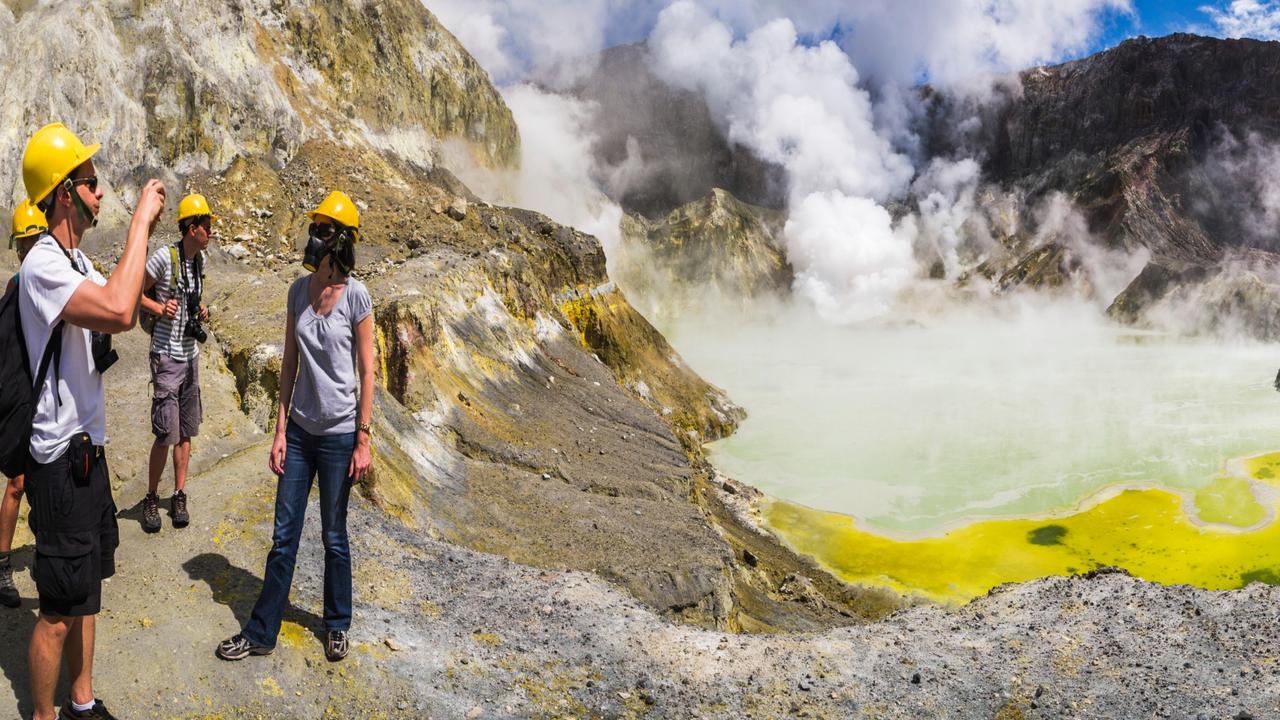White Island: The daily tourism gamble that was a disaster waiting to happen
Sitting within the Bay of Plenty, a scenic 90km boat ride from the township of Whakatane, White Island was a tourism goldmine. Until disaster struck.
Sitting within the Bay of Plenty, a scenic 90km boat ride from the township of Whakatane, White Island was a tourism goldmine.
Bringing in around 10,000 paying customers each year, from cruise ship passengers to enthusiasts seeking the thrill of getting up close and personal with an active volcano, it needed little introduction.
But the profitable private island in New Zealand, reportedly bringing in around $4 million tourist dollars each year, was a catastrophe waiting to happen.
Within a matter of hours, an eruption threw the booming volcano tourism industry into the spotlight, raising questions around why people were allowed there in the first place – and who should be blamed for the lives lost.
RELATED: Hospital staffer explains horrific scene on White Island


The White Island eruption is expected to have a dampening effect on Whakatane’s tourism industry.
According to Stuff, figures from Infometrics show tourism contributed $129 million to the Whakatane district economy last year alone, accounting for nearly 5 per cent of its economy. In addition, the industry provides 900 jobs for the town – many of which are in the midst of peak season.
But the profit has ultimately come at a horrible cost. And a cost to the tune of millions if tour operators are found guilty under health and safety laws.
Legal experts in New Zealand predict the tour operators could face a maximum fine of $1.5 million if a Worksafe investigation finds serious breaches of health and safety laws.
White Island is privately owned and only permitted operators are allowed to take tourists on guided tours. Despite stringent safety checks, essentially, it’s down to the operator whether or not it’s safe enough to tour the island.
RELATED: Chilling new footage from White Island eruption


RELATED: White Island victims named
Just weeks before the eruption, GeoNet, which operates a geological hazard monitoring system, raised the alert level to two (out of five), due to “moderate and heightened volcanic unrest”.
But it wasn’t enough to stop boatloads of tourists from White Island Tours – and many by helicopter – venturing to New Zealand’s “jewel” in the Bay of Plenty crown, including passengers on-board Royal Caribbean’s Ovations of the Seas cruise ship.
Royal Caribbean, the cruise company that provided passengers the option of booking a trip to the island, could also face additional lawsuits in America, where it is based.

RELATED: How these newlyweds’ escaped the White Island eruption
However, New Zealand’s compensation act will prevent victims from launching personal injury claims against the firm, with any payouts being made by the Government.
Graeme Christie, a specialist insurance lawyer, told the New Zealand Herald that grieving families could look into taking legal action in America to avoid restrictions in New Zealand.
If courts there find Royal Caribbean has a case to answer, the company could face personal injury claims potentially running into the tens of millions, it’s claimed.

Some experts have long thought the White Island volcano was too unpredictable to allow daily tours.
Professor Raymond Cas, from Monash University in Victoria, has visited the island twice and has always feared those visiting may be put in danger.
“White Island has been a disaster waiting to happen for many years,” he told the Australian Science Media Centre.
VOLCANO TOURISM A BOOMING INDUSTRY
The appeal of the island is the unknown. What is bubbling beneath the surface? How hot does it get at the crater?
With many tourists choosing to venture to active volcanoes around the world, the concept of closing down the island – especially during peak season.
Standing alongside the power of nature, these active mountains pose a big problem for the industry that cashes in on the appeal.
White Island, or Whakaari, is a popular destination for day tours and scenic flights. It has been dubbed by some tour operators a “living, breathing, geological giant” and “the world’s most accessible active marine volcano”.

As with visitors to Stromboli off the coast of Italy or adventures to Mount Agung in Bali – most visitors are unprepared for these risky situations that could arise, which increases pressure on emergency services.
“Volcanoes are one of the forces of nature that truly are beyond human power to control: We can’t do anything about eruptions, other than get out of the way,” Amy Donovan, a geographer at the University of Cambridge, wrote for a paper published in December with the Royal Geographical Society.

White Island houses one of several volcanoes in New Zealand that can produce sudden explosive eruptions at any time – and with little warning. But it’s not alone – Hawaii is also an area known for its eruptions.
Last year, more than 1500 people had to be evacuated when the Kilauea volcano erupted, sending molten lava through forest land and bubbling up on paved streets.
In 2014, a sudden volcanic eruption of Mount Ontake in Japan resulted in 63 deaths. There was little warning, and the area was popular with hikers, with several hundred people on the slopes when it blew.
Research has shown the key driving force for volcano tourists is spectacle and awe. According to Dr Donovan, being near a live volcano is listed as being “very appealing” by visitors – despite the risks.

“Many active volcanic countries face the dilemma of wanting tourists but also wanting to keep people safe, which creates a difficult conundrum,” she said.
“This research highlights the careful balance that needs to be found between the positive impacts of tourism and ensuring that visitors are responsible, not putting themselves, or others, at risk.”
THREAT OF THE ERUPTION WILL HAVE ON TOURISM
In November 2017,Bali’s most important industry – tourism – was literally rocked by the major volcanic eruption at Mount Agung.
It forced the evacuation of 40,000 people from the volcano’s foothills and made headlines around the world.
Next, the rumbles and spilling of ash resulted in a temporary closure of Bali’s main airport for days on end.
Before the volcano started rumbling, the island appeared to be on course to have at least five million arrivals in 2017. But the threat of more eruptions resulted in visitor numbers plummeting and a major hit to the region’s economy.

With so many active volcanoes around the world, tourists are seeking out thrills on mountains from Japan to New Zealand, Italy and Hawaii.
“Getting close to volcanoes offers a rare opportunity to experience the power of the restless earth: the smouldering, seething release of pressure from the brittle crust of earth caused by the crush of tectonic plates,” travel journalist Simon Calder told the BBC.
“But with the reward comes a range of risks. They can include sulphur dioxide and other toxic volcanic gases, material from the volcano being thrown out, lava flows and possible resulting wildfires, landslides and, for coastal locations, tsunamis.”
Tours of White Island have been running for more than 30 years, but the question remains over whether this deadly eruption will signal the end of the once lucrative industry for the region.
“It does bring a lot of people to the town. It’s not the only thing in the town, but everyone gravitates to it,” Whakatane resident Donna Sergent told the ABC.
“It’s such a unique experience to go over to White Island.”

Ms Sergent, like many locals in the area, is concerned over what banning tours to the island could mean for their community.
“In all honesty, I don’t see why it shouldn’t continue,” she said.
“People know the dangers. It’s been operating for so many years now.”
Local motel owner Alison Fox agreed, saying the risk on the island was no different to other dangerous regions in the world.
“Any place where you’re going to have something like that, over 100 years there’s going to be a tragedy,” she said.
While it is unclear whether tourists will be allowed to return to the island, Infometrics economist Brad Olsen told Stuff the tourism sector was “pretty savvy” – especially in New Zealand. But the fate of the region will lie with a health and safety investigation, launched by Worksafe, into the deaths, alongside a parallel criminal investigation by police.

“We saw this with Kaikoura (with the 2016 earthquake), there will be a short-term impact on tourism, there’s no doubt about that,” Mr Olsen said.
“But actually New Zealand’s tourism offerings are pretty resilient because we quite quickly understand what needs to change to continue to provide a service in a safe manner.”




